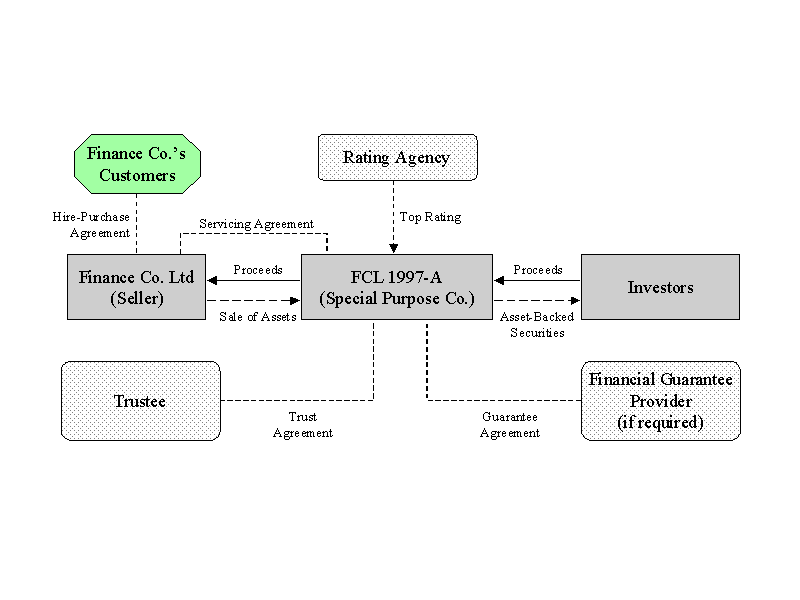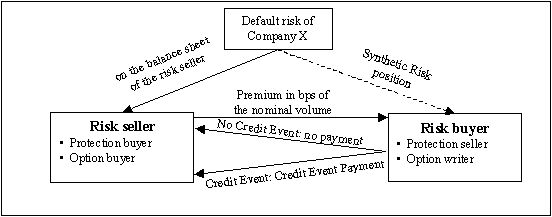|
Prof. Ian H. Giddy, New York University presented at Seminar on "Risk Management in Financial Institutions" Sogang University, Seoul, October 2001 |
|
Supplement 2: Typical structures of ABS in Asia The diagram illustrates the asset securitization technique. We start with an hypothetical finance company, Finance Company Ltd (FCL). The company provides loans for private automobiles, small delivery vans and trucks, and farm equipment. While the receivables have a reliable payment history, the growth of FCL’s business means that it has strained the limits of its leverage to dangerous levels. Equity capital is scarce, and the owners are not willing to relinquish control by issuing public stock. After working with its bankers, the financial guarantee company, the regulatory and rating agencies and the lawyers to structure the deal, FCL establishes the new company, called FCL 1997-A, to buy its hire-purchase receivables and to issue asset-backed securities. This new company or trust has no other purpose and will be dissolved after the securities mature -- hence the term special-purpose vehicle (SPV). The specially formed vehicle purchases the assets from FCL and sells notes or certificates to investors. The investors’ stake is secured by the assets in the trust, which are held on behalf of investors and are no longer controlled by the originator or its creditors. The investors, however, are getting more than secured claims. They are receiving predictable cash flows from a selected pool of assets that has been screened by the originator, by the rating agency, and in many cases by an independent guarantee company. 
 Back to Main Page ("Financial
Institution Risk Management: The Impact of Securitization")
|